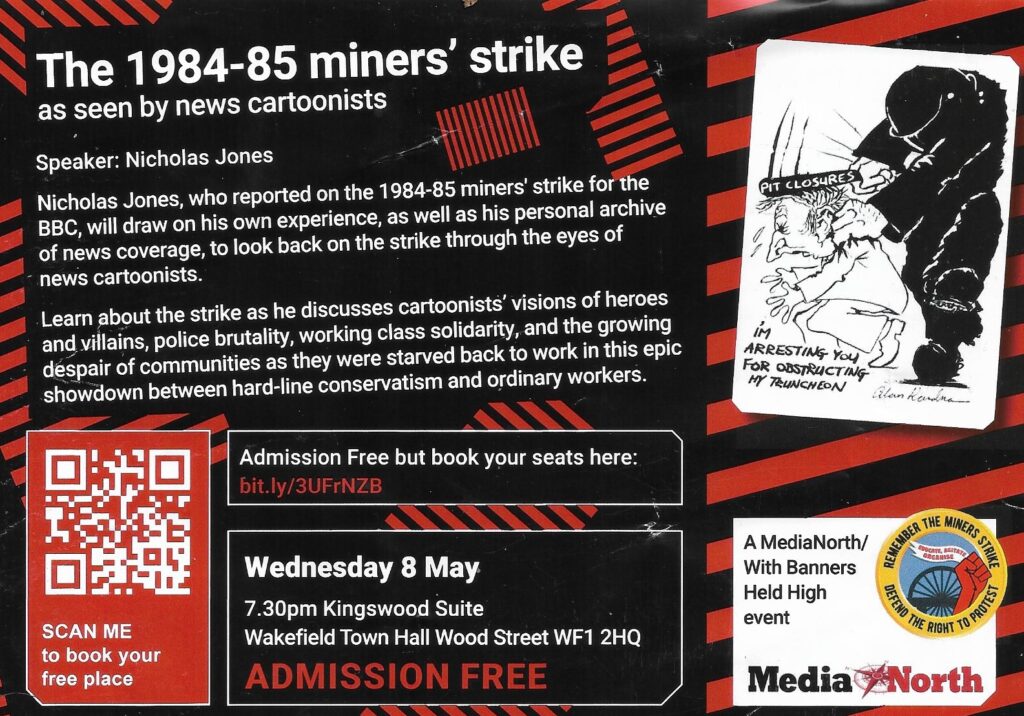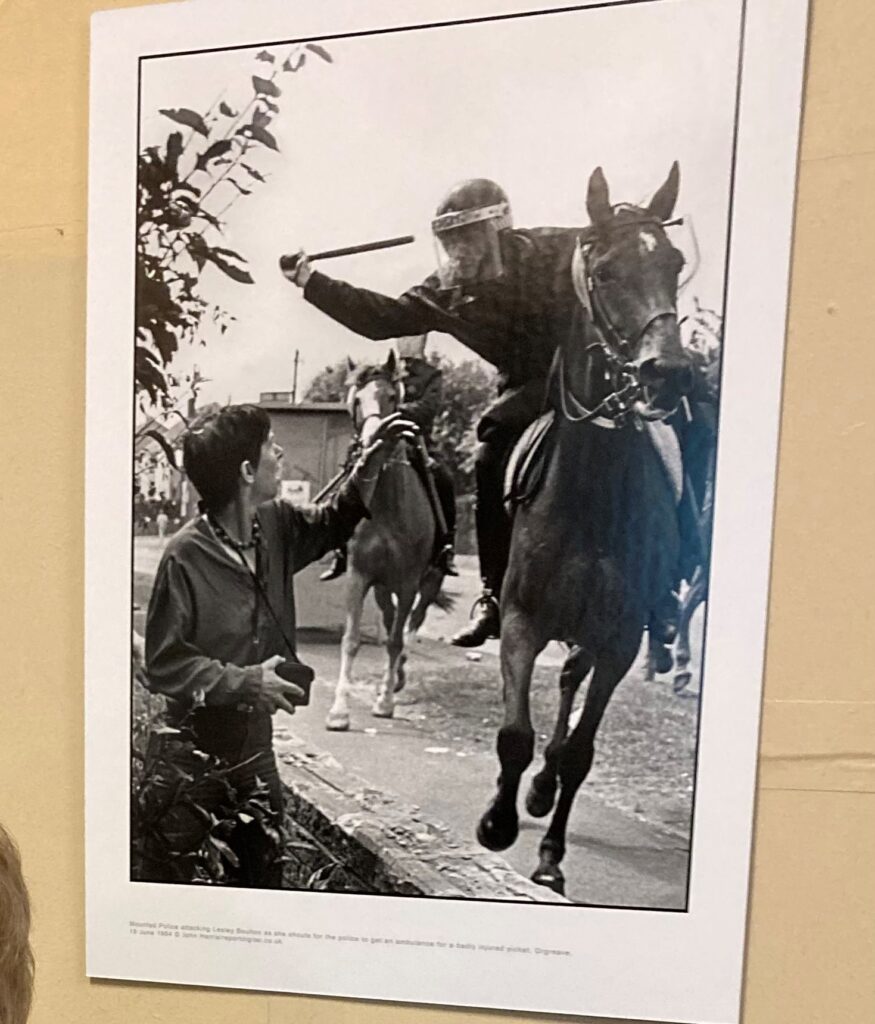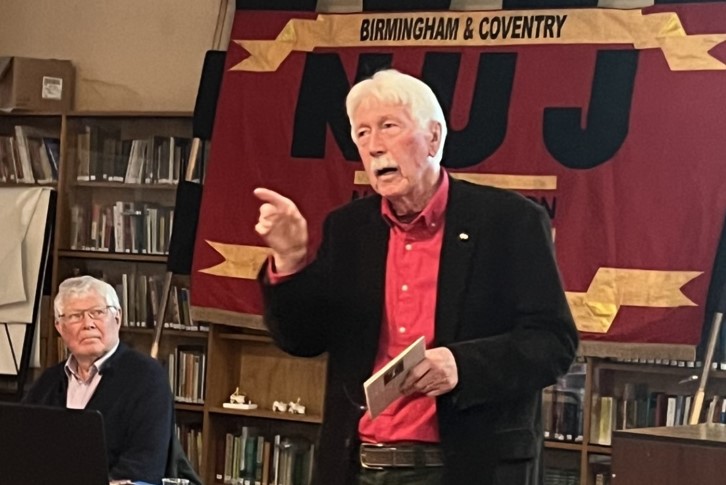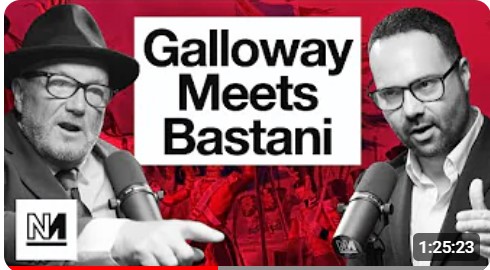By Bob Wade, Branch Secretary, Birmingham & Coventry NUJ
The 40th anniversary of the miners’ strike was commemorated in Birmingham with a special photographic exhibition and meeting, organised by the city’s National Union of Journalists branch.
Granville Williams (pictured above), a veteran industrial correspondent and one of the founding members of the Orgreave Campaign for Truth and Justice, outlined how the Tory media waged a vicious campaign against the miners, and how trade unionists fought back.
Granville outlined how there was a sea-change in the editorial stances of the Fleet Street newspapers in the mid-1970s: the Tory press had always been hostile to the labour movement, but the transfer of ownership of many of the newspapers, from the Sun to the Daily Express, from the old ‘One-Nation’ Conservative press barons to hardline Thatcherites, meant a new era of blatant propaganda, of ‘fake news’ and weaponising the media.
Fleet Street Press barons
These were the days before social media, and the Fleet Street newspapers had a massive combined circulation of 15 million. The miners’ strike also coincided with the advent of ‘Breakfast TV’ , so when they reviewed ‘today’s newspapers’ on the programme, the Fleet Street press barons set a very hostile narrative for the broadcast media too.

Granville went through some of the vicious anti-NUM propaganda of the national newspapers at the time – Thatcher had declared the miners as the ‘enemy within’, and the Tory press used the “language of war” in all its coverage of the dispute.
There was an internal media battle within the mining industry too. The National Coal Board had an internal newspaper, Coal News, for all NCB employees, which in normal times was distributed at the pithead. But the NCB, of course, had all the personal addresses of every miner, and when the strike began they posted copies – at enormous expense – to every individual miner, full of propaganda and inflated ‘reports’ of the numbers returning to work.
The print trade unions fought back in support of the miners as best they could. In Fleet Street a guerilla war ensued, and print unions of the time, SOGAT and the NGA, threatened industrial action to obtain many ‘rights of reply’ on behalf of the NUM, in response to the more rabid stories – which they secured in the Daily Express, News of the World, Sun, Daily Mail, Observer and the Sunday Times.
Sun print union protest distortion
The press barons had a taste of what would happen if they didn’t comply: the Sun wanted to use a front page of a picture of NUM leader Arthur Scargill, who was actually waving but made to look like he was giving a Hitler salute, with the headline “Mine Fuhrer”. The Sun print unions removed the offending article, put in an explanation of why they had done it, and then printed the issue for all the world to see.

Granville told the meeting that the fighting spirit of the miners lives on. He recalled a dispute in 2009, where management were attempting to rip up an agreement with UNITE at the Superdrug warehouse, in what had been the home of Frickley colliery.
The strike was solid – he discovered that the senior steward was a former miner, as were twenty of the strike committee. They resurrected the old method of ‘flying pickets’, but this time targeting Superdrug stores across the country, leafleting shoppers asking them to boycott the shop and talking to local media about why they were there. The management caved in within three weeks.
There was a magnificent exhibition of photographs taken during the year-long struggle, organised by John Harris of reportdigital.co.uk. John will be known by many on the left for his frontline, sympathetic photographic treatment of workers in struggle, and took many of the iconic photographs of the 1984-85 strike.
This included the famous image, (above, as shown in the exhibition) which became the ‘poster-image’ of the struggle. It was of a young woman called Lesley Boulton, raising her arm to fend off an approaching truncheon-wielding mounted riot cop.
Some stories behind the pictures
John gave some of the stories behind the pictures. In Lesley Boulton’s case, she was actually standing over an unconscious, badly injured miner, calling on the police to get an ambulance. Just to the left, you can see a miner’s hand grabbing her belt, who pulled her out of the way just in time.
Another famous image shows a bare chested teenager spread-eagled across a car being battered by a riot shield wielding riot cop at Orgreave. The victim was actually the 16-year-old son of a miner, whose dad had told him to guard their car to make sure it wasn’t overturned and used as a barricade by his furious comrades.
There were some more humorous tales – one picture shows a miner being chased by three mounted police, but he still retains a cigarette in his hand: as John said “When you’ve faced the deprivation of several months on strike, you are not going to waste that precious cigarette, no matter what!” Or the image of a one-shoed miner’s wife battering the village scab over the head with her other shoe.
Granville closed the meeting highlighting a forthcoming event in Wakefield on 8 May. (See flyer above) It will look at the miners’ strike as seen by news cartoonists, including the work of Alan Hardman, the cartoonist for Militant and miners’ organisations during the strike. Alan sadly passed away this year, although there is a campaign to get funding and sponsorship for the book of his cartoons Need Not Greed (see articles on Alan Hardman’s work here).



